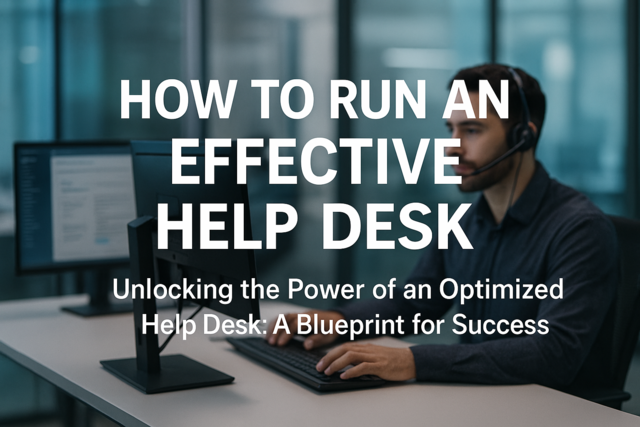We all have a certain way in which we engage in conflict or a way in which we confront someone else about something that has happened to cause conflict.
You have probably heard the phrase, 'conflict avoidant.' This describes a person who does not want to be around conflict at all, and they will do everything possible to avoid it.
However, this is not a healthy way to interact in the world, or in the workplace. When you avoid conflict, you will not have the opportunity to learn from the situation and to find out how to manage such situations in the future.
At the same time, there are better ways to approach these more tense situations and to confront someone in way that does not necessarily incite or cause conflict.
The Right Place
If you have an issue that is coming up for yourself and for a co-worker, it can help to find a private place to talk about it. This is a conversation you do not want to have with everyone watching or in a place where you might not feel comfortable talking about your true feelings.
Some ideas for a better place to talk include:
- In an empty office.
- Outside the office.
- In your private office.
Think about where you could talk so you will not be disturbed.
Additionally, it is best not to talk about something related to conflict over the telephone or email. Since you are not able to interact physically with this person, you may miss cues in their body language or facial expressions.
Try to have confrontational meetings in person whenever possible.
The Right Time
Something to also keep in mind is that you want to have confrontational interactions when you or the other person has time to talk at length. When you are rushed, you can have a feeling of being unable to say everything you want to say, which can sometimes make you say things that you do not mean.
Try to find times in the day or after the workday to talk with this person. Give yourself more time than you think you will need. In addition, if you need more time, set up an additional time or see if the other person can extend their time.
If it is impossible to make time during the workday due to assignments, it might be a good idea to tell your boss that you and this other person need to work out something that might hinder your productivity. Your boss is likely going to tell you to step away from your assigned work for a certain amount of time to get the conflict sorted out.
The Right Attitude
When you are meeting up with someone about a conflict situation, it is best to go in without any expectations or attachments to the outcome. You will also want to go into the meeting with a positive attitude.
What does this mean?
- Focus on the fact that you will come to a resolution.
- Be positive and think well of the other person.
- Do not assume you know everything or that you understand the other person until you ask them for details.
Try to walk into your meeting without already thinking you know everything and that you are right. When you can keep a positive attitude, you will ensure that you are listening to the other person and you are not creating more conflict at the same time.
Ask Questions
A way to make sure a confrontation is not difficult is to look for ways to clarify what has happened. You might think of yourself as a newspaper reporter, someone who has to take down all of the details before they can write up the entire story.
Some questions you might be able to use include:
- What happened from your point of view?
- What did I do that upset you?
- What could I have done differently?
- Are there ways that will help us work together better in the future?
- What do you mean by __________?
- How do you see this working out?
The more you can turn the conversation into a productive dialog, the more you will be able to create solutions that make you both feel productive.
Using 'I' Statements
Another way that can help a conversation between two co-workers avoid turning into a problematic interaction is to focus on using 'I' statements. This tool is often used in therapeutic settings because it turns the attention back on the person speaking.
What you also do when you are talking with the other person and using these 'I' statements is to avoid accusing someone else of something that you think they did.
Even if it is true, when you can focus on your experience and what happened with you, then this will often keep the other person from getting defensive. Imagine if someone sat down across from you and told you that YOU were doing this wrong, as opposed to someone saying, "I noticed that when the copies were not done by 3 PM, I fell behind with my work."
Try getting the other person to agree this using 'I' statements and you will notice a shift in the tension of the conversation.
In addition, it might feel strange to do this, but the more you do it, the easier it becomes and the more likely you are to use it naturally. Conflict.
Summary
When you are confronting someone else, there are a few things that you can do to work on the situation in a mature manner, thus, helping avoid conflict. Choosing the right place, the right time, and the right words are all ways to ensure you are both able to converse rationally and effectively
When it comes to conflict, we might be able to nod our heads in agreement about what we should do when we are in an argument or a disagreement with someone else.
However, when conflict happens, we might do something completely different. There are several different conflict styles of which you might want to be aware. Moreover, this knowledge can help you see what another person might be doing, and you can find out more about what you are doing when you engage with others.
Accommodation
A common conflict style is to accommodate the other person, and not 'rock the boat.' This is often seen between a staff member and their boss. Instead of trying to work together, the worker might hesitate to argue and might focus instead of accommodating the boss' ideas so the worker is not fired.
When you find yourself accommodating someone else, think about what you want from the interaction, and then move the conversation back so you can say what you need to say also.
Avoidance
The most common conflict style is to avoid conflict altogether. This often looks like someone is not being a part of any risky discussions and possibly never speaking up for their self. You might be the one that stays quiet during meetings and always does what you are told because you know it will keep things peaceful.
In addition, you might be the person that pretends that everything is fine, even when it is not. Though this is common, it can lead to feelings of being the person who never gets their way.
Collaboration
One of the healthiest ways to approach conflict is to look at this process as an opportunity to collaborate with someone. This might mean that you work together to find a new way that you can both live with, or it might mean that you continue to work together to see how you can grow a relationship.
Collaboration is healthy because you are not trying to compromise, and you are not trying to have one side win. What you are trying to do is to find a way to develop a solution together.
When you do this, you will both be invested in the outcome, and you will have a stronger bond because you both got a voice in the matter. You will also have the history of working together, which will allow you to move into that sort of interaction more easily the next time.
Collaboration is the space in which you are both able to find a solution that works well and that serves your needs, as well as the needs of the company.
Competition
Many times, in workplaces, you will find that conflict often looks like one person trying to push their ideas onto someone else, or sticking to their opinion, no matter what.
This is a person that wants to win the conflict, and it is common in an office setting. Think about it, when you are in an office and you are with other people who might be interested in your job, you want to be the one that wins arguments and conflicts, as this can make you seem more powerful and intelligent.
However, if you approach conflict from a competitive angle, you will also create more tension, especially if the other person is also competitive. You may never come to resolution with the other person, and this can create a strange dynamic in the workplace.
In addition, it can set up power dynamics that are challenging to handle in more difficult situations and projects. A person who has to win might always be the leader, or might be a troublesome team member when not chosen to be a leader.
Compromise
Though many people might think that compromise is a good way to approach conflict, let us think about this a bit more. Compromise means that both people may need to sacrifice something to come to a solution.
It also means that someone might end up getting more than the other person gets. Though this is not always a bad thing, think about the long-term ramifications of feelings as if you settled on a solution.
Certainly, compromise is warranted at times, but when it can be avoided, that can bring about a more effective working environment.
What is Your Conflict Style?
Knowing what your conflict style might be can help you better understand why you might be facing conflict in your workplace right now. Even though you might not think that you are causing conflict, if you are working collaboratively, then, you might be adding to the tension.
- What do I do when faced with conflict?
- How do I feel about conflict in general?
- Do I know how to handle tense situations?
- Am I willing to work in a collaborative manner?
To help move into a more collaborative style, figure out why you are the conflict style you are in, and then figure out how you can begin to change this.
It might begin with something as simple as starting to confront people when you feel there is conflict. You can begin just by asking them how you can work together in a more effective way, or you can be honest about the fact that you want to solve the problems together.
You may not change your conflict style or habit overnight, but with time, you can create a new way of approaching conflict, a way that can turn a difficult workplace into a more productive and rewarding place to be.
Summary
In this section, you learned about the different styles of conflict, including accommodation, avoidance, collaboration, competition, and compromise. All of these styles can affect the way that conflict may or may not be managed.































